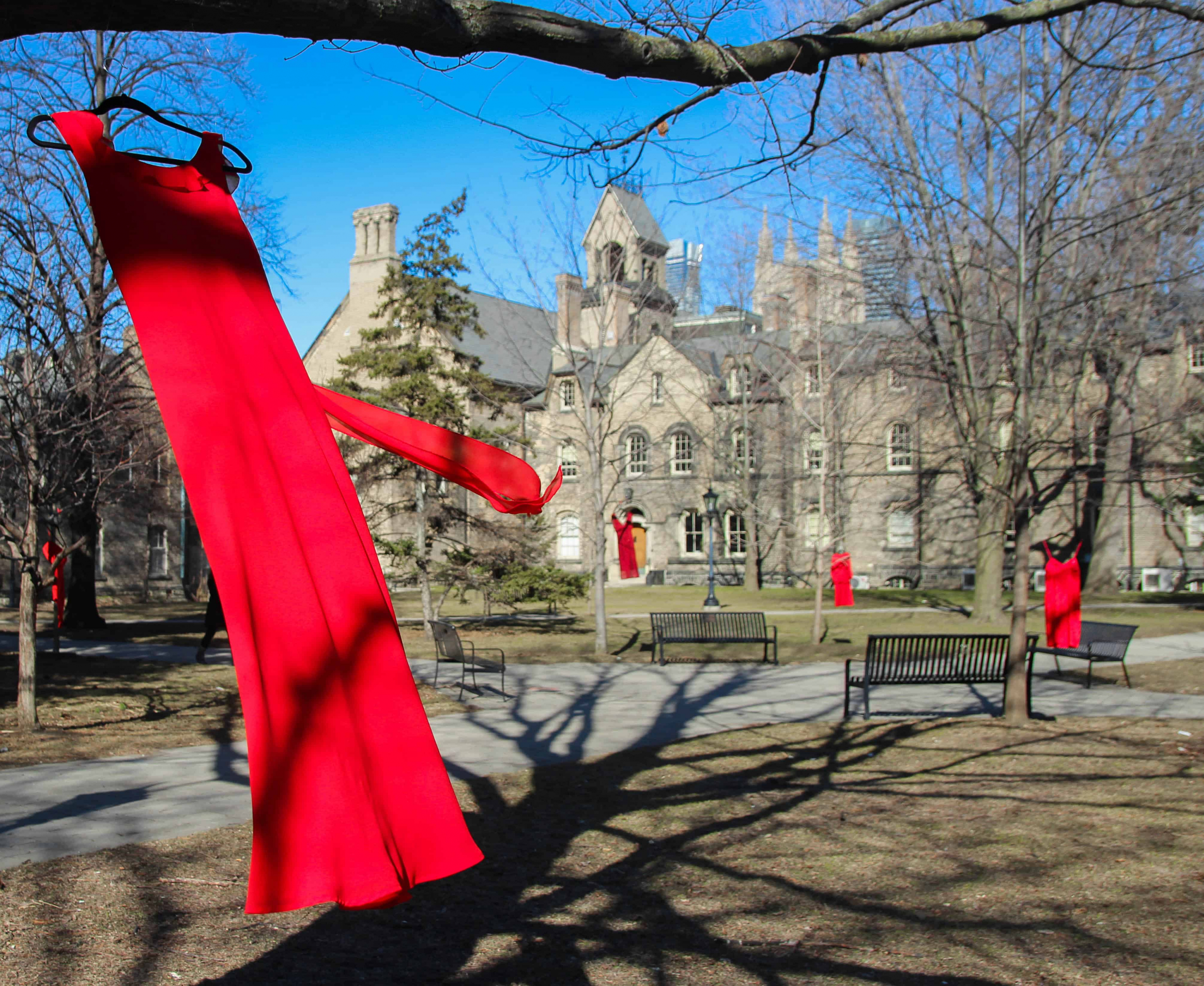This year, the University of Toronto’s Women & Gender Studies Institute is hosting Jaime Black as its artist-in-residence. Black is a Métis artist based in Winnipeg, who has brought her installation, The REDress Project, with her to U of T.
Black’s project began in 2010 in Winnipeg, her hometown. She had publicized a call for donations of red dresses for her project, receiving over 100 donations. Thus began The REDress Project, which calls attention to the thousands of cases of missing and murdered Indigenous women across Canada.
Through the project, Black addresses gender violence, racialization, silencing, systemic discrimination, and loss as a product of settler colonialism. Black’s work demonstrates an aesthetic response to these issues. The REDress Project has been shown in various locations across Canada and is now present in public spaces on U of T’s campus.
“I really feel like Canada is actually built on an abusive relationship with Indigenous people… that’s still carrying on today,” said Black.
She noted contemporary instances of people being displaced and sacred sites being desecrated for purposes of industrial development, such as at the Standing Rock Indian Reservation. “Peoples’ voices are not being heard despite their active and persistent and collective efforts to have their voices heard. They’re still being silenced and so that kind of relationship between Indigenous people and the state is still alive and well and that’s something we need to start thinking about,” said Black.
Black’s art is made up of multiple layers that speak to the relationship between the state and Indigenous women in particular. When asked about the significance of the use of the colour red in her work, she said, “It’s a sacred colour to me… I’ve always used red in my own personal spiritual practice… It’s the colour of life blood, so it’s really our vitality, and our essence of who we are.”
Black said that the red dresses serve as a way to safely discuss the violence that Indigenous women are experiencing. She said that “it hints at the violence without recreating trauma,” encouraging people to listen to voices that often go unheard.
Black’s work was installed on various sites around campus, with most sites chosen based on their access to open space. The Philosopher’s Walk is one site that was picked for its meaning. “Taddle Creek, Philosopher’s Walk was a really significant spot that we wanted to put dresses because… Indigenous people used to meet at the river running through that space, that is now underground, so it’s a really beautiful space to kind of bring Indigenous precedence back to that space,” Black said.
The installation calls attention to the missing and murdered Indigenous women of Turtle Island through the illustration of the intersections of art and history. “Art has the capacity to connect with people in a different way than maybe text would, or maybe a story, or maybe people have negative views of activists and activism and people are overloaded with information often, and they find ways to shut down from that,” said Black.
“I feel like art really supersedes that, and connects to people before they have a chance to put their guard up. It really allows them to emotionally and viscerally and subconsciously connect to the work before they hear the story and they’re actually curious and open and wanting to hear what the story is,” she added.
In Black’s artist statement for the project, she wrote, “Through the installation I hope to draw attention to the gendered and racialized nature of violent crimes against Aboriginal women and to evoke a presence through the marking of absence.”
Her salient installation demonstrates what happens when voices refuse to be silenced and histories resurface.


